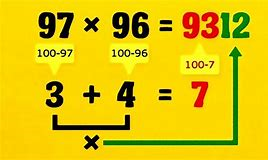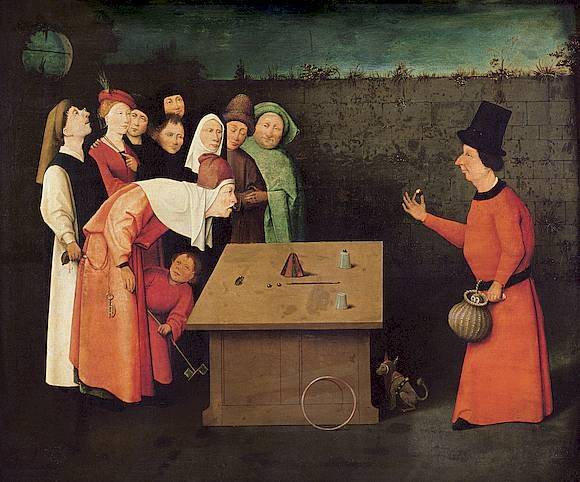Magie

MATHeMAGICA
di Ennio Peres
Matematica e magia
di Bruno D’Amore
Tre re matemagici per un'epifania
di Piergiorgio Odifreddi su Polymath

Hieronymus Bosch, Il mago
Historia de las matematicas: algunos ejemplos de magia numerica extraidos de viejos libros
di Vicente Meavilla Segui
Al estudioso de la historia de las matematicas, en su trabajo de busqueda, analisis y valoracion de textos, no le resulta extrano encontrar abundante material que cualquier espiritu clasificador incluiria, sin dudar, en la seccion de Matematica Recreativa.
En este articulo presentamos algunos juegos matematicos de adivinacion, cuyo interes didactico es notable, extraidos de tres manuales espanoles escritos alla por los siglos xvi y xvii. Para hacer mas comoda la lectura de los textos originales se ha respetado su vocabulario y sintaxis, pero hemos actualizado su ortografia.
The Mathematics of Magic: The Gathering.
by Jon Prywes
A Study In Probability, Statistics, Strategy And Game Theory.
You start with 20 life points, and when they are reduced to 0, the game is over and the other person wins. You and another person both have a deck of sixty or more Magic cards, which are used in playing the game. The cards can be from a variety of different sets, with (for the most part) no more than four of any one card. The players alternate in taking turns. Each turn is a sequence of events that involve drawing a card, putting cards into play, “attacking” the other player (using cards that represent creatures) and then discarding if necessary.
Matematica e... Calcolatori mentali
di Federico Peiretti su Progetto Polymath
Calcolatori prodigio del passato, Calcolatori moderni, Il nuovo campione, I matematici in difficoltà nei calcoli, Tecniche e trucchi per il calcolo mentale, Il segreto dei calcolatori prodigio giapponesi.
Lightning calculators. Dead Reckonings: Lost Art in the Mathematical Sciences
by Ron Doerfler
The Secrets of Mental Math
by Arthur T. Benjamin
Calcolatore prodigio
Da Wikipedia, l'enciclopedia libera
Calcolatori prodigio
di Giovanni Pasqua Roxy, su Progetto Polymath
Arthur Griffith (1880 - 1911) usava questo trucco: lui o un aiutante proponevano di moltiplicare il numero 142 857 143 per un altro indicato dal pubblico. Essendo questo primo fattore 1 000 000 001 / 7 è sufficiente giustapporre al secondo fattore se stesso e dividere per 7.